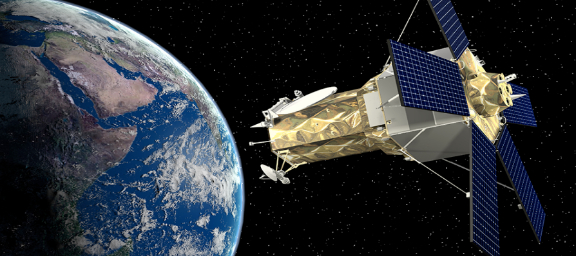
One of Lockheed Martin's latest accomplishments is the successful build of the WorldView-4 satellite for DigitalGlobe.

There was little rest for the satellite—the WorldView-4 was placed into a truck with a super special container that actually duplicated the cleanroom environment where the satellite was manufactured. A road trip of 250 miles and the truck with the precious payload arrived at Vandenberg Air Force Base, with the entire route planned using LIDAR technology to determine any possible hazards on the selected routes. On September 15th, a United Launch Alliance Atlas V 401 will push WorldView-4 into orbit.

Artistic rendition of the WorldView-4 satellite.
Prior to the shipment, the satellite passed a full suite of environmental, functional and performance tests and was declared ready for integration with the rocket that will carry the satellite to an altitude of nearly 400 miles in space. The rocket, a United Launch Alliance (ULA) Atlas V 401 provided by Lockheed Martin Commercial Launch Services, has a four meter fairing to safely hold the satellite as 17,000 miles an hour is reached during the launch.
WorldView-4 is the latest in a series of imaging and data satellites that Lockheed Martin has manufactured for customers around the world. The satellite is outfitted with a camera so accurate that the make and model of a car can be discerned, with advanced star trackers to ensure precision pointing and antennas that parse the collected information back to Earth.
Once launched, the satellite will more than double DigitalGlobe's coverage of the world's highest-resolution imagery and increases the rate at which the firm's 15-year library of time-lapse high-resolution imagery will be collected. WorldView-4 will orbit the Earth every 90 minutes, capturing more than 680,000 square kilometers of the Earth's surface daily (18 terabytes)—the equivalent of the land area of Texas.
www.lockheedmartin.com/commercialspace

